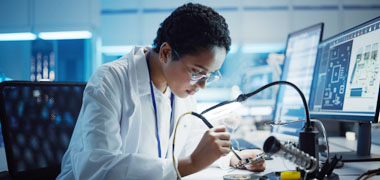
This role has a moderate level of AI exposure. AI can enhance efficiency for some tasks, but this job still relies on human skills and decision-making.
Explore all careersBiomechanical Engineers design machines and devices to enhance health, working in areas like prosthetics, robotics, and medical equipment development.
Get qualified to work as a Biomechanical Engineer with a course recognised across Australia. Speak to a training provider to learn more.
Browse occupations related to Biomechanical Engineer
Generally, Biomechanical Engineers can expect an annual salary range from around $80,000 to $110,000, translating to approximately $1,500 to $2,100 per week in gross earnings. Increase your earning capacity by obtaining post-graduate qualifications in biotechnologies and biomedical engineering.
 Courses.com.au Team
Courses.com.au Team
There are no clear employment figures for Australian Biomechanical Engineers. They are employed by medical research and technology companies, health organisations, and academic research institutions. Some Biomechanical Engineers work as independent consultants.
 Courses.com.au Team
Courses.com.au Team
You can launch your career as a Biomechanical Engineer in Australia with a Bachelor of Engineering (Honours) (Medical). As your career progresses you should consider post-graduate qualifications such as the Master of Biomedical Engineering.
Source: Australian Government Labour Market Insights 2023
 Courses.com.au Team
Courses.com.au Team



Biomechanical Engineers use physics and engineering practices to design and develop machines, healthcare equipment and personal devices that improve human health and medical practices. They can work in a range of niche areas including prosthetics, stem cells, robotics, implants, laboratory research, computer modelling, equipment installation and repairs.
As a Biomechanical Engineer you could be creating a computer model of children with arthritis to compare with healthy children, designing educational toys for babies, refining the design of a pacemaker, developing a new monitoring device for athletes, designing prosthetic devices for mass production, teaching a team of nurses how to use a newly released machine for monitoring core vitals, or testing and repairing an imaging device at a hospital.
To succeed in this occupation you’ll need a curious mind, a strong set of technical skills, and the ability to communicate with the people who will actually use your devices on a daily basis.